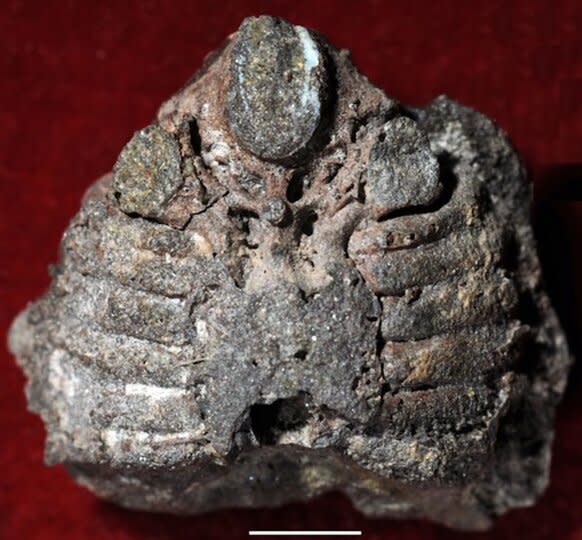How our ears evolved from the gills of 400-million-year old fish
In the 1995 film Waterworld, severe climate change has caused global changes to the Earth’s surface, forcing humans to live on boats or floating cities and scrape out a living on the high seas. It also drove evolution in at least some humans, as evidenced by the Mariner’s gills, tucked neatly behind his ears. Audiences may have found that unbelievable, but it might not have been as impossible as it seems.
If you trace our evolutionary lineage far enough into the past, humans and all other land-living vertebrates will find primitive fish as their many-great grandparents. Of course, there are millions of years of evolution standing between our gilled ancestors and ourselves, and it’s highly unlikely we’d adapt them again on so short a timescale, but the positioning behind the ears might have been right on the money.
Zhikun Gai from the Institute of Vertebrate Paleontology and Paleoanthropology, and colleagues, analyzed the 3D braincases of ancient jawless fish dubbed Shuyu and found evidence that our ears evolved over millennia from their gills. Their findings were published in the journal Frontiers in Ecology and Evolution.
“Many important structures of human beings can be traced back to our fish ancestors, such as our teeth, jaws, middle ears, etc. The main task of paleontologists is to find the important missing links in the evolutionary chain from fish to humans. Shuyu has been regarded as a key missing link as important as archaeopteryx, ichthyostega, and tiktaalik,” Gai told SYFY WIRE.

The first 419-million-year-old galeaspid fossil completely preserved with gill filaments in the first branchial chamber Photo: Zhikun Gai et al
Scientists found the Shuyu specimens, which hail from a species of galeaspid fish, in a quarry in the Changxi Zhejiang Province in the early 2000s. Despite having skulls only about the size of a fingernail, they held within them incredible knowledge which answered a question paleontologists have been trying to answer for a century.
Prior to the discovery of Shuyu, scientists were able to trace the origin of the middle ear back to fish spiracles — tiny openings which are used to pull water into the body before flushing them out through the gills — but the origin of the spiracle was unclear. Consequently, there was a gap in our knowledge regarding the evolution of the ear.
“Now, we show that the fish spiracle evolved from a complete gill between the mandibular and hyoid arches, which bears gill filaments,” Gai said.
Over evolutionary time, those spiracles shifted function, particularly in vertebrate animals, and became the small vibrating bones in the middle ear which are responsible for picking up and transporting sound to the inner ear. In essence, without the tiny breathing holes of ancient fish living 438-million-years-ago, our method of hearing might have been entirely different. Meanwhile, we needed a new way of breathing and shifted that function to the mouth and nose, at least in humans. Some animals, namely insects, still use spiracles to breathe while some vertebrates have adapted even more unusual respiration techniques.

3D braincase of Shuyu Photo: Zhikun Gai et al
Getting to the data inside the fossilized brain cases was a particular challenge. Scientists needed a way to see inside their mineralized heads without destroying the specimens. To do that, they used synchrotron X-ray tomographic microscopy (SRXTM), a high-powered scan which allowed them to create slice images of the bones without causing damage.
“SRXTM provides a means of nondestructively investigating the internal structures of organisms with high spatial resolution and it has been applied to address a number of paleontological problems that would be undesirable by destructive means. This approach [was] applied successfully to characterize the cranial anatomy of Shuyu,” Gai said.
All told, it took the team five years to reconstruct seven virtual models of the Shuyu braincase and solve the mystery. The next time you hear the brain-bending sounds of your favorite music, you can thank a fish for the privilege.


